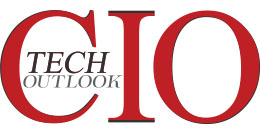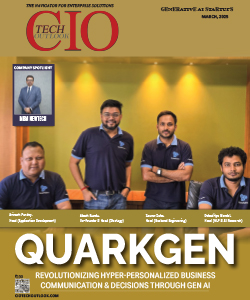Organizations Wasting Billions on Customer Loyalty Programs That Don't Work Like They Used To, Accenture Strategy Study Finds
CIOReview Team | Wednesday, 15 February 2017, 09:10 IST
 Organizations are wasting billions of dollars each year on customer loyalty programs that don’t work like they used to, according to new research from Accenture Strategy. With millions of loyalty points sitting dormant and the majority of U.S. consumers (78 percent) retracting loyalty at profit-crushing rates, organizations must pay attention to the new factors driving customer loyalty in the digital age or risk losing customers for good.
Organizations are wasting billions of dollars each year on customer loyalty programs that don’t work like they used to, according to new research from Accenture Strategy. With millions of loyalty points sitting dormant and the majority of U.S. consumers (78 percent) retracting loyalty at profit-crushing rates, organizations must pay attention to the new factors driving customer loyalty in the digital age or risk losing customers for good.
The Accenture Strategy report, ‘Seeing beyond the loyalty illusion: it’s time you invest more wisely’, gauges the experiences and attitudes of 25,426 consumers around the world, including 2,532 U.S. consumers, about their loyalty relationship with brands and organizations today. The report found that 54 percent of U.S. consumers have switched provider in the past year, and almost one fifth (18 percent) confirm their expectations around brand loyalty have completely changed. The report also identified five new factors influencing loyalty today.
“New ‘languages of loyalty’ have emerged, driven by brands experimenting with creative digital experiences, which have changed the dynamics of customer loyalty today,” said Robert Wollan, senior managing director, global lead of Advanced Customer Strategy at Accenture Strategy. “Every consumer has a natural instinct around what makes them ‘stick’ to a brand. The traditional ‘low price’ and ‘reliable service’ mechanics are no longer as effective at driving loyalty. With 66 percent of U.S. consumers spending more with the brands they love, organizations that stick to traditional approaches and don’t explore the new drivers influencing loyalty risk draining profitability and pushing customers away – even when they have the best intentions or are following their historical playbook. It’s time for organizations to take a fresh look at loyalty.”
The new languages of loyalty
Accenture Strategy has identified five languages of loyalty which are driving customer relationships in the digital age, particularly among U.S. millennials:
- ‘Tokens of affection’ – Fifty-nine percent of U.S. consumers feel loyal to brands that present them with small tokens of affection, such as personalized discounts, gift cards and special offers to reward their loyalty.
- ‘Get to know me’ – Forty-one percent of U.S. consumers are loyal to brands that offer them the opportunity to personalize products to create something that is bespoke to them. Fifty-one percent are loyal to brands that interact with them through their preferred channels of communication. Eighty-one percent feel loyal to brands that are there when they need them, but otherwise respect their time and leave them alone. Furthermore, 85 percent are loyal to brands that safeguard and protect the privacy of their personal information.
- ‘Thrill seeker’ – Forty-four percent of U.S. consumers are loyal to brands that actively engage them to help design or co-create products or services. Forty-one percent are loyal to organizations that present them with new experiences, products or services. Furthermore, 33 percent are loyal to brands that engage them in ‘multi-sensory’ experiences, using new technologies such as virtual reality or augmented reality.
- ‘If you like it, I like it’ – Twenty-three percent of U.S. consumers are loyal to brands that partner with celebrities, and another 23 percent feel loyal to organizations that partner with social influencers, such as bloggers and vloggers. Forty-two percent are loyal to brands that their family and friends do business with. Furthermore, 37 percent show loyalty to brands that actively support shared causes, such as charities or public campaigns.
- ‘Hook me up’ – Thirty-nine percent of U.S. consumers feel loyal to brands that connect them with other providers, giving them the ability to exchange loyalty points or rewards. Likewise, 51 percent are loyal to brands that keep them on the cutting edge by consistently offering the latest products and services.
“Organizations need to understand the loyalty languages of their most profitable customers and implement the optimal mix to ensure they’re delivering the experiences that drive advocacy, retention and growth,” said Kevin Quiring, managing director, Advanced Customer Strategy, Accenture Strategy. “An appetite for extra-ordinary, multi-sensory experiences, hyper-personalization and co-creation, are changing consumer dynamics around loyalty and forcing brands and organizations to shift their approaches and programs.”
Additional U.S. consumer findings from the report include:
Fight for loyalty:
- Sixteen percent of U.S. consumers currently have a negative or non-existent reaction when brands try to earn their loyalty.
- Over a quarter (26 percent) think brands should do everything possible to earn their loyalty.
How consumers express loyalty:
- Fifty-five percent of U.S. consumers express loyalty by recommending the brands and companies they love to family and friends.
- Forty-three percent increase the level of business they do with the brands and companies they love.




